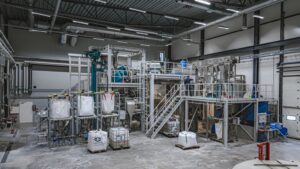New research shows that the interaction of roots with a common soil fungus changes the genetic expression of rice crops, triggering additional root growth that enables the plant to absorb more nutrients.
In addition to causing extra root growth, the mycorrhizal fungus also embeds itself within crop roots at a cellular level — blooming within individual plant cells. The fungus grows thin tendrils called hyphae that extend into surrounding soil and pump nutrients, phosphate in particular, straight into the heart of plant cells.
Plants “colonized” by the fungi get between 70 percent to 100 percent of their phosphate directly from these fungus tendrils, an enormous mineral boost, which could reduce the need for farmers to apply phosphate fertilizer to crop fields.
The hope is that mycorrhizal fungi could one day act as a biofertilizer that ultimately replaces the need to mine phosphate from the ground for industrial fertilizer.
For more information, visit http://www.cam.ac.uk/research/news/fungi-enhances-crop-roots-and-could-be-a-future-bio-fertilizer.











